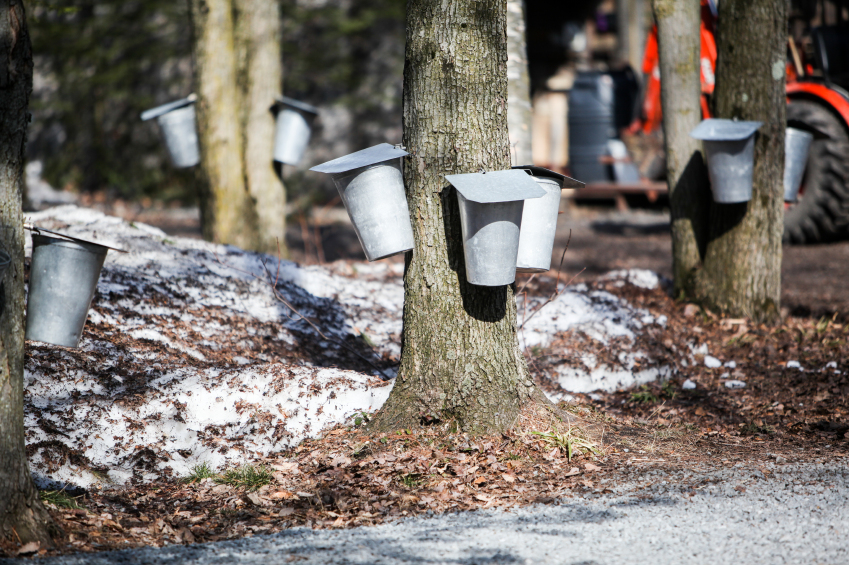2 More Spring Plants and How to Incorporate Them Into Healthy Recipes

Spring is almost here, and that means the plant nations are beginning to, once again, make an appearance. Whether you are trying to return to a more traditional diet, or if you want to learn more about the plants around you, there are a multitude of spring plants that can improve your health, provide creative recipe ideas, and save you some cash.
Wild vegetables and fruits contain far more nutrients than those we purchase from the store. Dandelion leaves, for example, have five to seven times more nutrients than spinach! Once a particular food is harvested, it quickly begins losing nutrients (and flavor). By the time an apple reaches your home, it has probably traveled over 1,500 miles to get there—and those grapes on your plate? They probably traveled over 2,100 miles! That is a lot of lost vitamins and minerals. If you harvest wild foods from the right areas, you can avoid the copious levels of herbicides and pesticides that are used on store-bought fruits and veggies. So, why aren’t we eating wild foods every day?
RELATED: 3 Spring Plants and How to Incorporate Them Into Healthy Recipes
Contrary to popular belief, traditional Native cuisine was flavorful, diverse, colorful, and creative. A simple fare of meat and potatoes is a wholly new concept, and this lack of diversity in our diets is largely responsible for the multitude of illnesses that plague Indigenous Peoples. Here are two spring plants that are found commonly all over Turtle Island, are chock-full of phytonutrients, and are easy to incorporate into your everyday meals:
Tree sap: Did you know that sugar maples (Acer saccharum) aren’t the only trees that can be tapped for their sweet, delicious sap? Birch (Betula sp.) sap makes delicious syrup, as does black walnut (Juglans nigra), sycamore (Platanus occidentalis) and, my personal favorite, boxelder maple (Acer negundo). Tapping trees is simple. All you need is a drill with a 7/16” drill bit, a bucket, and a “spile.” Spiles are the small peg-like spigots that are inserted into a tree to allow the sap to run. They can be ordered online or you may find them at your local hardware store. You can only tap trees for sap for a few weeks in early spring, when the daytime temperatures are above freezing and nighttime temps are still below freezing. I like to freeze some of the sap and drink it “as is,” but I also love making my very own syrup for pancakes and French toast. Here is one of my favorite recipes for using pure boxelder sap.

Squash Soup with Maple Sap
1 (2-3 pound) winter squash (Lakota, acorn, Hubbard, etc.) – roasted
2 leeks
1 onion
1 tablespoon olive oil
Salt
1 teaspoon fresh rosemary
3 cups of water
1 cup pure maple sap
3 cups chicken broth
2 tablespoons lemon juice
Cayenne pepper
2 tablespoons pure maple syrup
Pumpkins seeds
Crumbled bacon
Remove the roasted squash (400F for 45 minutes or until soft) from its skin. Chop the leeks and onion by slicing thinly. In a large soup pot, heat the olive oil over medium. Add the onions, a dash of salt, and the rosemary and cook, until soft and golden brown, 10 to 12 minutes. Stir in the roasted squash and the leeks and add 3 cups of water, the maple sap, and a teaspoon of salt. Simmer, covered, for about 20 minutes, until soft. Stir in the chicken broth, lemon juice, a pinch of cayenne, and the maple syrup. Remove from heat. After it cools a bit, puree the soup until smooth. Top with pumpkin seeds and crumbled bacon to serve.
Dandelion (Taraxacum officinale): Fresh, spring dandelion leaves are one of my favorite childhood memories. My grandmother would cook them in a cast iron pan in a little bit of bacon grease. I loved going on walks to harvest the tender, spring leaves. She told me that dandelion leaves that grow in the shade are less bitter, and this is a scientific fact. Dandelion leaves are plentiful and full of phytonutrients. You can eat them raw in salads or on sandwiches, or you can sauté them in bacon fat and serve them with a sliced, hardboiled egg on top.
Easy Dandelion Salad
3 cups young dandelion leaves
1 apple, thinly sliced
¼ cup toasted walnuts
Crumbled blue cheese
Crumbled bacon
Balsamic vinaigrette
Wash the dandelion greens well and top with remaining ingredients. Serve immediately.
Linda Black Elk (Catawba) is an ethnobotanist and restoration ecologist. Her research focuses on indigenous food sovereignty, medicinal plants, and eliminating food deserts. Linda is an instructor at Sitting Bull College in Fort Yates, North Dakota, and in her spare time she loves to hunt, forage, eat and heal.
Read more at http://indiancountrytodaymedianetwork.com/2016/03/15/2-more-spring-plants-and-how-incorporate-them-healthy-recipes-163665